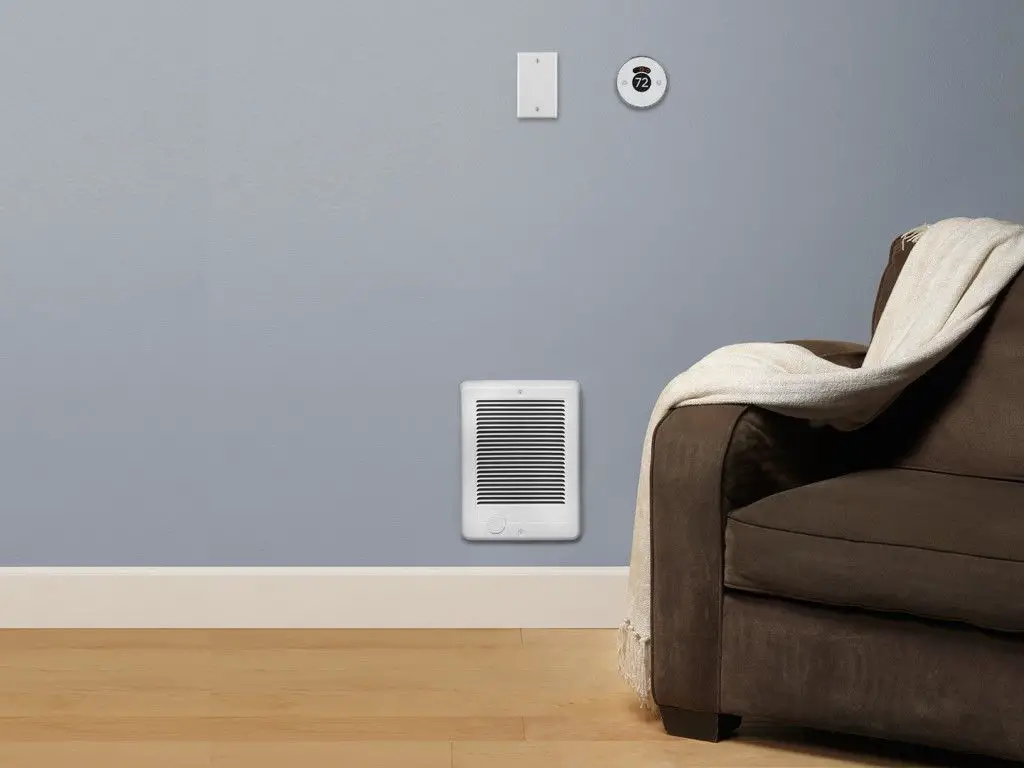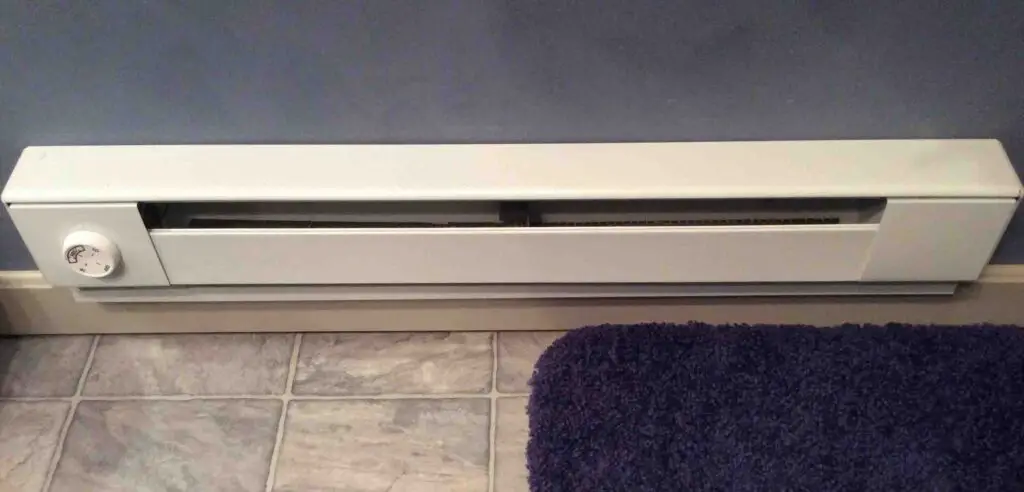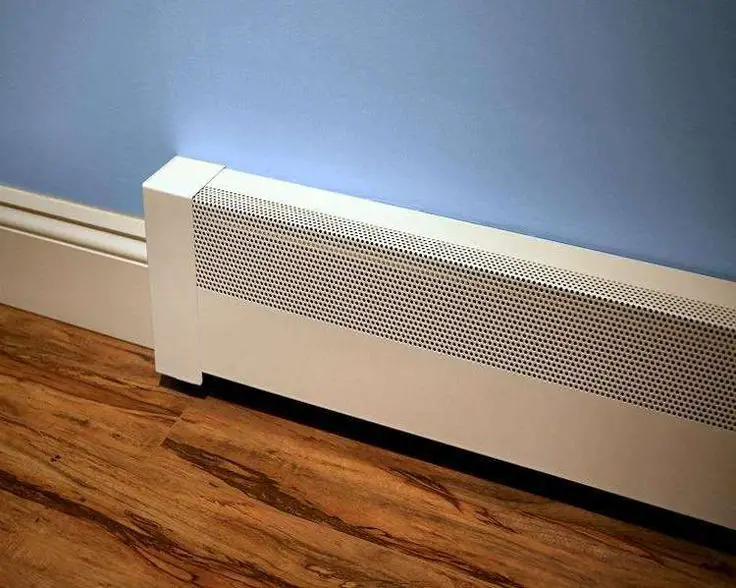How Does Electric Baseboard Heater Work
Introduction
How Does Electric Baseboard Heater Work : Electric baseboard heaters are a popular choice for heating homes and offices, providing a cost-effective and efficient way to keep spaces warm during the colder months. These heaters are designed to be mounted along the baseboard of a room, distributing heat evenly throughout the space.
At their core, electric baseboard heaters operate on a simple principle they convert electrical energy into heat energy. When electricity flows through the heating element of the baseboard heater, it encounters resistance, which causes the element to heat up. This heated element then radiates heat into the surrounding air, warming up the room.
The heating element of an electric seal baseboard heater is typically made of a metal alloy, such as stainless steel or nickel-chromium. This alloy has a high resistance to electrical current, allowing it to generate heat efficiently. The element is enclosed within a metal housing, which helps to distribute the heat evenly and protect the element from damage.
One of the key advantages of electric baseboard heaters is their ability to provide zone heating. Unlike central heating systems that heat the entire house, baseboard heaters can be installed in individual rooms, allowing for more precise temperature control. Each room can have its own thermostat, which regulates the amount of heat produced by the baseboard heater. This means that you can adjust the temperature in each room according to your preferences, saving energy and reducing heating costs.

What is the disadvantage of baseboard electric heat?
Many homes heat inexpensively and efficiently using baseboard electric heat. Drawbacks are common of all heating methods. Baseboard electric heat lacks flexibility. Baseboard electric heat heats only the room it’s put in, unlike forced air or radiant heat.
To heat a large home with multiple rooms, you must install baseboard electric heaters in each. Installing and wiring each heater separately is costly and time-consuming. Baseboard electric heat may not distribute evenly in open-plan homes.
Another problem of baseboard electric heat is electricity utilization. Most residences have electricity, but it’s more expensive than natural gas or propane. This implies baseboard electric heat may increase energy costs, especially in winter when heaters run more.
Baseboard electric heat is inefficient and expensive. Air and radiant heat heat a room faster than electric resistance. This may prolong heating and impair comfort. Baseboard electric heat may also be less appealing. Putting heaters along the baseboard might be unattractive and limit furniture placement. Hot heating elements can burn families with little children or pets.
Do baseboard heaters use a lot of electricity?
Baseboard heaters are a popular choice for heating individual rooms or small spaces. However, one common concern among homeowners is whether baseboard heaters use a lot of electricity. In this article, we will explore this question and provide a comprehensive answer.
Firstly, it is important to understand how baseboard heaters work. These heaters rely on electric resistance to generate heat. When electricity passes through the heating element, it encounters resistance, which in turn produces heat. Unlike other heating systems, baseboard heaters do not rely on forced air or water circulation.
Now, let’s address the main question: do baseboard heaters use a lot of electricity? The answer depends on various factors, including the size of the room, the desired temperature, and the insulation of the space. Generally, baseboard heaters are more energy-efficient than other electric heating options, such as space heaters or electric furnaces.
However, it is worth noting that baseboard heaters can still consume a significant amount of electricity if used improperly. For example, if you set the thermostat to a high temperature or leave the heater on for extended periods when not needed, it can result in higher energy consumption. It is important to use baseboard heaters judiciously and adjust the thermostat according to your comfort level.
Additionally, the insulation of your home plays a crucial role in determining the energy efficiency of baseboard heaters. Therefore, it is advisable to ensure proper insulation in your home to maximize the efficiency of baseboard heaters and minimize energy consumption.
What is an advantage of an electric baseboard heater?
A benefit of electric baseboard heaters is energy efficiency. Without ducting or a central heating system, electric baseboard heaters heat the area directly. This keeps heater heat from escaping through ducts and other channels, improving heating efficiency.
Easy installation is another benefit of electric baseboard heaters. Electric baseboard heaters are easy to install by homeowners, unlike other heating systems. Simply place them on the wall and plug them in. This makes adding extra heating to particular rooms in a home easy.
Electric baseboard heaters have individual temperature control. Each unit can be operated separately, letting users customize room temperatures. These controls are useful in larger homes or buildings where different areas need varied heating levels.
Additionally, electric baseboard heaters operate quietly. Electric baseboard heaters are quieter than conventional heating methods. They’re perfect for bedrooms, offices, and other quiet spaces.
Finally, electric baseboard heaters are affordable. They cost less to buy and install than alternative heating systems. They also cut energy waste and heating costs by heating the space directly.
Is it safe to leave baseboard heaters on overnight?
Leaving baseboard heaters on overnight is a common practice for many people, especially during the colder months. However, the safety of doing so is a topic of concern for many. While baseboard heaters are generally considered safe to use, there are a few factors to consider before leaving them on overnight.
Firstly, it is important to ensure that your baseboard heater is in good working condition. Regular maintenance and inspections are crucial to identify any potential issues that could pose a safety risk. If you notice any strange smells, unusual noises, or if the heater is not functioning properly, it is best to have it checked by a professional before leaving it on overnight.
Secondly, it is important to consider the location of the baseboard heater. It should be placed away from any flammable materials such as curtains, furniture, or bedding. This will help prevent any potential fire hazards. Additionally, it is important to keep the area around the heater clear of any obstructions to ensure proper airflow and prevent overheating.
Thirdly, it is important to use the appropriate thermostat settings when leaving a baseboard heater on overnight. Setting the thermostat too high can not only lead to excessive energy consumption but also increase the risk of overheating. It is recommended to set the thermostat to a comfortable temperature that is not too high or too low.
Lastly, it is important to consider the age and condition of your home’s electrical system. Older homes may have outdated wiring that may not be able to handle the load of a baseboard heater running overnight. It is advisable to have a professional electrician inspect your electrical system to ensure it is safe and capable of handling the additional load.
What is better than baseboard heaters?
One alternative to baseboard heaters is radiant floor heating
This type of heating system involves installing heating elements beneath the floor, which then radiate heat upwards. This method of heating is highly efficient and provides a more even distribution of heat compared to baseboard heaters. Additionally, radiant floor heating eliminates the need for bulky baseboard units, allowing for more flexibility in furniture placement and room design.
Another option to consider is a ductless mini-split system
Ductless mini-split systems offer both heating and cooling capabilities, making them a versatile choice for year-round comfort. They are also highly energy-efficient, as they allow for zoned heating and cooling, meaning you can control the temperature in individual rooms or zones.
If you’re looking for a more eco-friendly option, geothermal heating may be the answer
Geothermal systems utilize the earth’s natural heat to warm your home. They work by extracting heat from the ground through a series of pipes and transferring it to your home. Geothermal heating is incredibly efficient and can significantly reduce your carbon footprint. While the upfront cost of installation may be higher than baseboard heaters, the long-term energy savings and environmental benefits make it a worthwhile investment.
Lastly, heat pumps are another alternative worth considering
Heat pumps work by transferring heat from the outside air or ground into your home. They can provide both heating and cooling, making them a versatile option. Heat pumps are highly efficient and can save you money on your energy bills. They are also a great option for homes in moderate climates, as they may not be as effective in extremely cold temperatures.
How does an electric baseboard heater convert electrical energy into heat?
An electric baseboard heater converts electrical energy into heat through a process called resistive heating. Inside the heater, there is a heating element made of a resistive material, usually a metal alloy such as nichrome. When an electric current passes through this element, it encounters resistance, which causes the electrons to collide with the atoms in the material. This collision generates heat energy, which is then transferred to the surrounding air.
The heating element is typically enclosed in a metal housing with fins or ridges. These fins increase the surface area of the heater, allowing for better heat transfer to the air. As the air comes into contact with the heated fins, it absorbs the heat and rises, creating a natural convection current. This convection current helps distribute the warm air throughout the room, providing a more even and comfortable heating experience.
In addition to resistive heating, some electric baseboard heaters also incorporate a thermostat to regulate the temperature. The thermostat senses the room temperature and automatically turns the heater on or off to maintain the desired level of warmth. This feature helps to conserve energy and prevent overheating.
Overall, electric baseboard heaters are efficient and reliable devices for converting electrical energy into heat. They provide a convenient and cost-effective heating solution for both residential and commercial spaces.
What are the main components of an electric baseboard heater and how do they contribute to its operation?
An electric baseboard heater consists of several key components that work together to provide efficient heating. The main components include the heating element, thermostat, and housing.
The baseboard heater’s heart is the heating element. It is usually constructed of high-resistance material like nichrome wire. Electric current goes through the heating element, generating heat through resistance. The room warms as this heat is transferred to the air. Baseboard heater capacity depends on heating element size and length.
The thermostat is another important baseboard heater part. The user controls temperature by adjusting electricity to the heating element.When the temperature goes below the set point, the thermostat activates the heating element again to maintain the intended temperature.
Baseboard heater housing is practical and safe. It shields the heating element and other parts. The housing is usually built of heat-resistant steel or aluminum. It has vents or grilles to let hot air into the space. The housing is also designed to be positioned along a wall’s baseboard for optimal installation and heat dispersion.
Are there any specific safety features or considerations associated with the use of electric baseboard heaters?
Yes, there are several safety features and considerations associated with the use of electric baseboard heaters. One important safety feature is the thermal cutoff switch, which is designed to automatically shut off the heater if it reaches a certain temperature. This helps prevent overheating and reduces the risk of fire.
Another safety consideration is the placement of the heater. It is important to ensure that there is adequate clearance around the heater to prevent any combustible materials from coming into contact with it. The manufacturer’s instructions should be followed regarding the recommended clearance distances.
Additionally, it is important to keep the heater clean and free from dust and debris. Regular maintenance, such as vacuuming the heater and keeping the air vents clear, can help prevent overheating and ensure safe operation.
Can an electric baseboard heater be used as the primary heating source for a room or is it more suitable as a supplemental heat source?
An electric baseboard heater can be used as both a primary heating source for a room or as a supplemental heat source, depending on the specific needs and conditions of the space.
As a primary heating source, an electric baseboard heater can effectively warm up a room and maintain a comfortable temperature. However, it is important to consider the size of the room and the insulation of the space. If the room is large or poorly insulated, a single electric baseboard heater may not be sufficient to provide enough heat to keep the room consistently warm. In such cases, additional heating sources may be necessary to ensure adequate warmth throughout the space.
On the other hand, an electric baseboard heater can also be used as a supplemental heat source in rooms where the primary heating system is not able to evenly distribute heat. For example, if there are certain areas in a room that tend to be colder than others, placing an electric baseboard heater in those areas can help to provide localized heat and improve overall comfort. Additionally, using an electric baseboard heater as a supplemental heat source can help to reduce the workload on the primary heating system, potentially leading to energy savings.

Conclusion
Electric baseboard heaters work by using electricity to generate heat. They are typically installed along the baseboard of a room and are controlled by a thermostat. When the thermostat detects that the room temperature is below the desired level, it sends a signal to the heater to turn on. The heater then uses electrical resistance to convert the electricity into heat, which is radiated into the room. This process continues until the thermostat senses that the room has reached the desired temperature, at which point the heater turns off.
One of the key components of an electric baseboard heater is the heating element. This element is usually made of a metal alloy, such as nickel-chromium, which has a high resistance to electricity. When an electric current passes through the heating element, it encounters resistance, which causes the element to heat up. The heat is then transferred to the surrounding air, warming up the room.
Another important component of an electric baseboard heater is the thermostat. The thermostat is responsible for monitoring the room temperature and sending signals to the heater to turn on or off. It works by using a sensor to measure the temperature and comparing it to the desired temperature set by the user. If the room temperature is below the desired level, the thermostat sends a signal to the heater to turn on. Once the room reaches the desired temperature, the thermostat signals the heater to turn off.








